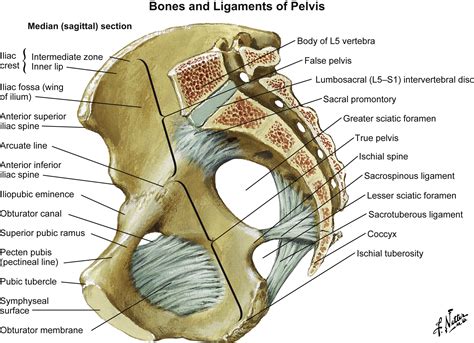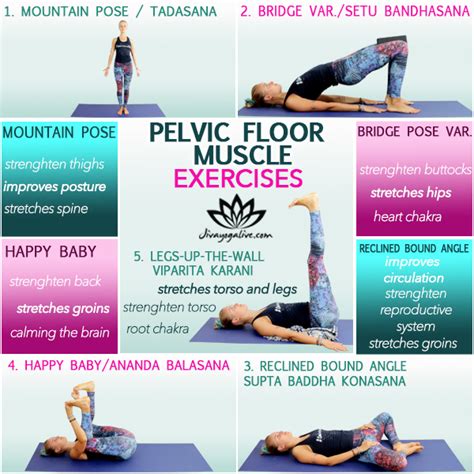Intro
Strengthen your core with 5 essential pelvic exercises, including Kegels, bridges, and squats, to improve pelvic floor health, stability, and overall wellness, reducing pain and discomfort with targeted pelvic muscle training and rehabilitation techniques.
The pelvic region is a complex and vital part of the human body, playing a crucial role in various functions such as bladder control, bowel movements, and sexual health. Maintaining strong and healthy pelvic muscles is essential for overall well-being, particularly for individuals who have experienced pregnancy, childbirth, or certain medical conditions. In this article, we will delve into the importance of pelvic exercises, their benefits, and provide a comprehensive guide on how to perform them effectively.
Pelvic exercises, also known as Kegel exercises, have been widely recognized as a valuable tool for improving pelvic health. These exercises involve contracting and relaxing the pelvic muscles, which can help to strengthen the muscles, improve bladder control, and enhance overall pelvic function. Regular practice of pelvic exercises can also help to alleviate symptoms of pelvic floor disorders, such as incontinence, prolapse, and pelvic pain.
The benefits of pelvic exercises extend beyond improving pelvic health, as they can also have a positive impact on overall physical and mental well-being. For example, strong pelvic muscles can help to improve posture, reduce back pain, and enhance sexual function. Additionally, the practice of pelvic exercises can help to reduce stress and anxiety, promote relaxation, and improve overall quality of life. With the numerous benefits of pelvic exercises, it is essential to incorporate them into your daily routine, especially if you are experiencing pelvic health issues or want to prevent them.
Understanding Pelvic Anatomy

Identifying Pelvic Muscles
Identifying the pelvic muscles can be challenging, especially for individuals who are new to pelvic exercises. One way to locate the pelvic muscles is to stop the flow of urine mid-stream while urinating. The muscles used to stop the flow are the same muscles that should be contracted during pelvic exercises. Another way to identify the pelvic muscles is to insert a finger into the vagina and squeeze the muscles as if trying to stop the flow of urine. The muscles that contract are the pelvic muscles.Benefits of Pelvic Exercises

- Improved bladder control: Pelvic exercises can help to strengthen the muscles that control the flow of urine, reducing the risk of incontinence and improving overall bladder function.
- Enhanced sexual function: Strong pelvic muscles can help to improve sexual sensation, arousal, and orgasm.
- Reduced risk of prolapse: Pelvic exercises can help to strengthen the muscles that support the uterus, bladder, and bowel, reducing the risk of prolapse.
- Improved posture: Strong pelvic muscles can help to improve posture, reducing the risk of back pain and improving overall physical function.
- Reduced stress and anxiety: The practice of pelvic exercises can help to reduce stress and anxiety, promoting relaxation and improving overall mental well-being.
Preparation for Pelvic Exercises
Before starting a pelvic exercise routine, it is essential to prepare the body and mind. This can involve:- Finding a quiet and comfortable space to practice
- Emptying the bladder and bowel before starting
- Relaxing the body and mind through deep breathing or meditation
- Identifying the pelvic muscles and understanding how to contract and relax them effectively
5 Pelvic Exercises to Improve Pelvic Health

- Kegel Exercise: This is the most basic pelvic exercise, involving the contraction and relaxation of the pelvic muscles. To perform a Kegel exercise, contract the pelvic muscles for 5-10 seconds, then relax for 5-10 seconds. Repeat for 10-15 repetitions.
- Pelvic Tilt: This exercise involves tilting the pelvis upwards and downwards, helping to stretch and strengthen the pelvic muscles. To perform a pelvic tilt, lie on your back with your knees bent and feet flat on the floor. Tilt your pelvis upwards, then downwards, repeating for 10-15 repetitions.
- Pelvic Clock: This exercise involves contracting and relaxing the pelvic muscles in a clockwise and counterclockwise direction. To perform a pelvic clock, contract the pelvic muscles for 5-10 seconds, then relax for 5-10 seconds. Repeat in a clockwise and counterclockwise direction for 10-15 repetitions.
- Bridge Exercise: This exercise involves lifting the hips off the floor, helping to strengthen the pelvic muscles and improve posture. To perform a bridge exercise, lie on your back with your knees bent and feet flat on the floor. Lift your hips off the floor, squeezing your pelvic muscles as you lift. Hold for 5-10 seconds, then relax for 5-10 seconds. Repeat for 10-15 repetitions.
- Wall Squats: This exercise involves standing with your back against a wall and sliding down into a squat position, helping to stretch and strengthen the pelvic muscles. To perform a wall squat, stand with your back against a wall and your feet shoulder-width apart. Slowly slide down into a squat position, keeping your back against the wall. Hold for 5-10 seconds, then stand up and repeat for 10-15 repetitions.
Tips for Effective Pelvic Exercise Practice
To get the most out of pelvic exercises, it is essential to practice them effectively. Here are some tips to keep in mind:- Start slowly and gradually increase the intensity and duration of exercises
- Practice exercises regularly, ideally 2-3 times per day
- Focus on proper technique and form, avoiding strain or discomfort
- Breathe naturally and avoid holding your breath during exercises
- Relax and contract the pelvic muscles slowly and smoothly, avoiding jerky or forced movements
Common Mistakes to Avoid

- Tightening the abdominal muscles: Tightening the abdominal muscles can put pressure on the pelvic muscles, reducing their effectiveness.
- Holding your breath: Holding your breath during pelvic exercises can cause strain and discomfort, reducing their effectiveness.
- Using the wrong muscles: Using the wrong muscles, such as the thigh or buttock muscles, can reduce the effectiveness of pelvic exercises.
- Practicing too intensely: Practicing pelvic exercises too intensely can cause strain or discomfort, reducing their effectiveness.
Overcoming Challenges and Setbacks
Despite the benefits of pelvic exercises, many individuals may face challenges or setbacks when practicing them. Here are some tips for overcoming common challenges and setbacks:- Start slowly and gradually increase intensity: If you are new to pelvic exercises, start slowly and gradually increase the intensity and duration of exercises.
- Practice regularly: Practice pelvic exercises regularly, ideally 2-3 times per day, to see consistent progress and improvements.
- Seek professional guidance: If you are experiencing difficulties or discomfort when practicing pelvic exercises, seek professional guidance from a healthcare provider or physical therapist.
- Stay motivated and consistent: Stay motivated and consistent with your pelvic exercise practice, celebrating small victories and progress along the way.
What are the benefits of pelvic exercises?
+Pelvic exercises can help to improve bladder control, enhance sexual function, reduce the risk of prolapse, improve posture, and reduce stress and anxiety.
How often should I practice pelvic exercises?
+It is recommended to practice pelvic exercises 2-3 times per day, ideally for 10-15 minutes per session.
Can pelvic exercises help with incontinence?
+Yes, pelvic exercises can help to improve bladder control and reduce the risk of incontinence. Regular practice can help to strengthen the muscles that control the flow of urine, reducing the risk of leakage and improving overall bladder function.
In conclusion, pelvic exercises are a valuable tool for improving pelvic health, reducing the risk of pelvic floor disorders, and enhancing overall physical and mental well-being. By understanding the anatomy of the pelvic region, preparing the body and mind, and practicing effective pelvic exercises, individuals can experience significant benefits and improvements in their overall health. We encourage you to share your experiences and tips for practicing pelvic exercises in the comments below, and to explore other resources and guidance for improving pelvic health.
